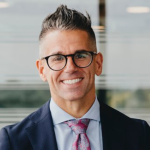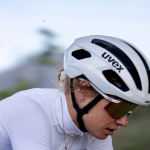Black Diamond Equipment Ltd’s (BDE) acquisition came as the company’s founder and CEO Peter Metcalf was seeking a capital structure that would provide liquidity for long-term investors while enabling the iconic brand to compete globally in an industry increasingly dominated by publicly traded companies.
“It has always been about building a company that is built-to-last, and this was the last missing link,” Metcalf told The B.O.S.S. Report in an exclusive interview last week.
Black Diamond Equipment (BDE) announced May 10 it was being acquired, in a reverse merger for $90 million in cash by Clarus Corporation, a publicly traded company. Clarus closed on the deal May 31, when it also acquired Gregory Mountain Products (GMP) for $45 million in stock and a debenture to create the outdoor industry’s newest publicly-traded company. The company’s stock began trading on the NASDAQ June 11 under the symbol BDE.
BDE management, fresh off a European sales meeting in the Alps, will ring the NASDAQ closing bell this afternoon.
Metcalf said the deal consummates his quest to build BDE into a global company that will outlast him and remain true to its outdoor roots and values. That quest intensified last year when BDE completed several major strategic initiatives to bolster its global presence. They included building a global logistics and manufacturing center in China, and installing an ERP system to integrate its operations across its sprawling global distribution system.
Metcalf said these initiatives laid the groundwork for Black Diamond to double in size. “When we did this deal, we were in a position where we had invested everything we needed to double the size of the company, which I did deliberately because I wanted the company to have a global platform to be independent and not a tuck-in for another company,” noted Metcalf.
At the same time, Metcalf was looking for a way to provide liquidity for BDE shareholders, which patiently waited for more than 20 years while BDE poured profits back into building the brand and the company. The majority of the company’s shareholders had held the stock since 1989, when Metcalf created BDE by leading a buyout of the assets of Chouinard Equipment after devastating product liability lawsuits drove that company into bankruptcy.
“From the beginning I told investors you cannot acquire more than 20% ownership,” Metcalf recalled. “You won't get control. There will be no liquidity date set. The investment horizon will be very long.”
Metcalf continued, “Unlike some of the companies who had multiple rounds of equity or had to please PE guys’ shorter time horizons, I was not under that pressure and had engineered it that way deliberately.”
In the past decade, though, BDE found itself increasingly competing against brands owned by large publicly-traded companies that had access to more and cheaper capital.
In the past decade, though, BDE found itself increasingly competing against brands owned by large publicly-traded companies that had access to more and cheaper capital.
After a board meeting early in the summer of 2009, Metcalf moved his focus toward trying to find a way to recapitalize the business while also ensuring BDE remained a “built-to-last company.”
He seriously explored private equity, leveraged buyouts, family money and mezzanine financing when he heard Robert Schiller was getting more serious about investing further in the outdoor space. In 2008 Schiller had partnered with Warren Kanders to acquire Gregory Mountain Products with proceeds from the 2007 sale of defense contractor Armor Holdings. Schiller had served as Armor’s president and COO and Kanders as CEO. Metcalf and Schiller, who owns a second home near BDE’s headquarters in Salt Lake City, arranged to meet. At first, their visions for combining the companies differed, Metcalf said. Only after continued conversation did they come to agreement on how to structure and run the new company.
Metcalf, who owns less than 1% of the new BDE, was named president and CEO. Schiller, with a stake just under 5%, was named executive vice chairman and director and Kanders, with 29.5%, was named executive chairman.
Metcalf ticked off five “wonderful components” of synergy that ultimately led to an agreement:
No IPO fees: Although it had not operated any businesses for years, Clarus Corp. was sitting on $85 million in cash and was already publicly-traded as an OTC stock. An acquisition by Clarus allowed BDE and GMP to become public companies without a costly initial public offering, or IPO.
Tax loss carry-forwards: Clarus has $231 million in net operating loss carry-forwards that can be used to shield future profits from federal income taxes for ten years.
Global cachet: The Black Diamond brand – and increasingly Gregory’s already have the global presence and reputation to make the deal work without the aid of an investment bank, which would have charged millions of dollars in fees to bring the companies public through an initial public offering, or IPO. “We had retailers and suppliers as shareholders and were always getting requests for people to buy in, so we did not need an investment banker to do that,” Metcalf said of the expensive dog and pony shows investment banks stage to sell IPOs. “I would argue BD was a $300 million global brand masquerading as an under $100 million company. Our brand footprint was way in excess of $100 million.”
Powerful Global Operational Platform: BDE has just completed putting in place a global operational and distribution platform significantly more capable than some companies three to five times its size. They have proven the scalability of the business with modest incremental operational spending.
Management synergy: The deal brought together Metcalf, with his lifetime experience and expertise in the outdoor industry, with Kanders and Schiller, who had made their mark on Wall Street with their $4.1 billion sale of Armor Holdings Inc. to the British defense contractor BAE Systems in 2007. The Clarus deal also provides BDE with a professional board of directors, which can act as a backstop for Metcalf and prepare for his eventual retirement.
These factors help account for the relatively strong valuation of 14 times EBITDA for the combined company. In fact, the multiples may actually understate profitability at BDE, which as a private company took an aggressive stance toward expensing rather than capitalizing investments in the ski boot business; its logistics center in China; and its new ERP system. That means it will have less depreciation expenses on those assets from earnings going forward.
And Acquisitions Loom Ahead…
“There was hefty deliberate expensing to move the company up a tier to make sure we could grow going forward without additional capital expense,” Metcalf said of the company’s financial statements for 2008 and 2009. “That made our numbers look a bit soft. This year, we are seeing the first material pay backs on those investments.”
BDE’s profit margins, in other words, have rebounded in 2010 to the levels of three and four years ago, Metcalf said.
BDE’s profit margins, in other words, have rebounded in 2010 to the levels of three and four years ago, Metcalf said.
Metcalf said that while BDE’s acquisition has enabled him and other investors to diversify their personal holdings, he and seven other senior managers at BDE still have a significant portion of their net worth invested in the business. Since the deal was announced, rank and file employees have bought Clarus stock, now trading under the BDE symbol, SOME at lower multiples than the management group.
“It’s really gratifying to see how many employees have been buying stock,” Metcalf said. “Several got it cheaper than me.”
“I'm still totally energized about this place, but I had recognized that the time to do something is when the business is growing; has a strong management and momentum; and you yourself feel competent and energized by the future,” Metcalf said of the BDE board’s decision to recapitalize. “We’ve engineered BDE’s independence into the future so that when I leave – someday in the future – it will still be an autonomous company – out front leading, growing and making a difference on behalf of our community of users, the environment, and on the issues we have championed since day one as opposed to being tucked in as part of some larger portfolio company.”















